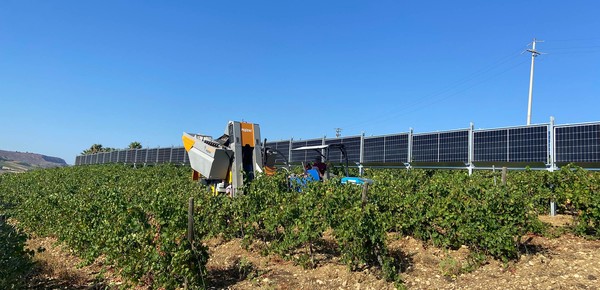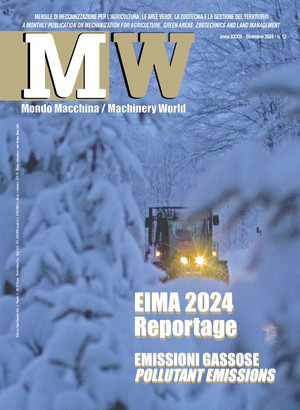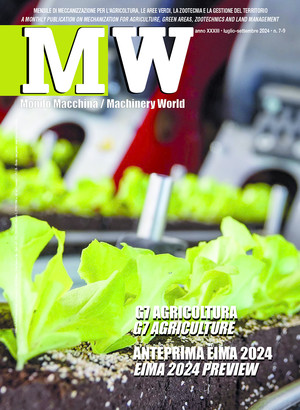
Agroenergy, the creation of Confagricoltura's Observatory
The first report on agroenergy in Italy endorsed by Confagricoltura and ENEL was presented in Rome. The study designates the creation of an industry Observatory to monitor the performance of the agroenergy sector and its future development opportunities
In order to face the numerous challenges posed by the Italian economy's “green” transition, the primary sector is called upon to play a role of utmost importance, which involves different plans of action, all pertaining to the vast sphere of the circular bioeconomy. In this scenario, agroenergy represents an undisputed opportunity to create income, to innovate and to consolidate sustainable development models. This topic, of great strategic importance, was addressed by Confagricoltura in conjunction with the presentation of the first Report on Agroenergy in Italy, produced with the support of ENEL and presented in Rome on February 11 this year. The report, explained Donato Rotundo, director of the Environment and Innovation Area of the Confederation, gives the go-ahead for an actual Observatory that will be tasked with monitoring the progress and future development opportunities of a sector with great growth potential. In this perspective, the investigation focused on some Renewable Energy Sources (RES) that integrate very well within agricultural companies for the production of electricity, such as biomass, biogas, hydroelectric and photovoltaic. However, the study represents a starting point to extend the scope of investigation to other RES, for example geothermal energy, and to other energy outputs, such as those related to the production of heat – explained Rotundo – essential for most of the production cycles in the agro-industrial sector.
According to the data in the Report, the present contribution of agriculture to the production of renewable electricity in Italy stands at 13 TWh per year, equal to approximately 11% of the total generation from RES. This yield is obtained from approximately 48,000 facilities, which overall have an installed power of 5 GW, divided as follows: photovoltaic 3 GW, biomass and biogas approximately 2 GW (62% of which is biogas), flowing water (mini-hydro) 30-40 MW. This is certainly not a negligible figure, since the installed power corresponds in terms of magnitude to that of 5 modern nuclear power plants. Consequently, implementing a proper policy to support the development of agroenergy would make it likely to realistically achieve around 9-10 GW by 2030, thus doubling the performance recorded to date. Going into even more detail, photovoltaic systems at the end of 2023 total approximately 46,000 units for an installed power of 2,877 MW, with an annual production of 2,984 GWh of which 508 GWh for company self-consumption. In the biogas sector there are more than 1,800 agricultural facilities distributed throughout Italy, but with a particular concentration in the North (Po Valley) and with an installed electrical power of approximately 1,000 MW of electricity (in addition to the production of biomethane). The biogas sector generates EUR 2 billion in cash flow per year for agricultural and agro-industrial companies, with more than 20,000 employees in the supply chain, but it also allows for significant savings to be achieved as a result of the use of locally produced digestate as a natural biofertilizer (around 30 million tons per year). The biogas-biomethane supply chain also allows for a considerable reduction in CO2 emissions, reducing these by 3 million tons per year. Remarkable results to be sure, but considering the 2030 objectives for RES of the National Integrated Energy and Climate Plan (PNIEC), the effort that needs to be made in the agricultural sector would require an even greater commitment, perhaps also looking at the forestry sector as suggested by the Minister of Agriculture, Francesco Lollobrigida, speaking at the presentation of the Report. To give an idea of the targets envisaged by the PNIEC, it is worth remembering that the RES will have to achieve a total power of 131 Gigawatts within 5 years. The Plan envisages that solar will achieve a total of 79.2 GW, wind power 28.1, hydropower 19.4, bioenergy 3.2, and geothermal 1 GW (this could increase depending on the level of maturity of some project initiatives under development). Confagricoltura relied on data collected by a working group of the EY consulting firm that analyzed public databases, market reports and listened to several expert operators in this particular segment of the energy market for the preparation of the Report. Furthermore, a sample of 400 medium-large sized agricultural companies (farms with 90 hectares on average) operating in Italy was studied. The interpolation of data, questionnaires and direct contacts yielded 14 “archetypes” or replicable development models. These, in extremely brief form, indicate the orientations of the companies in relation to the productive directions (cultivation, breeding, forestry and production support) and to the renewable energy technologies most suited to the specific needs of the company (PV, agrivoltaic, biomass, biogas, etc.). “The production of renewable energy is an opportunity for our companies, both because it offers the ability to diversify sources of income, and, – added the President of Confagricoltura, Massimiliano Giansanti, - because it allows for the environmental transition, reducing emissions and actively contributing to the production of green energy". On the other hand, as pointed out in the Confagricoltura-Enel survey, agricultural companies that have invested in agroenergy are precisely those that have benefited from a significant improvement in production performance, both in quantitative and qualitative terms, thanks to their propensity to innovate production processes, to integrate income and to reinvest in advanced technologies.








